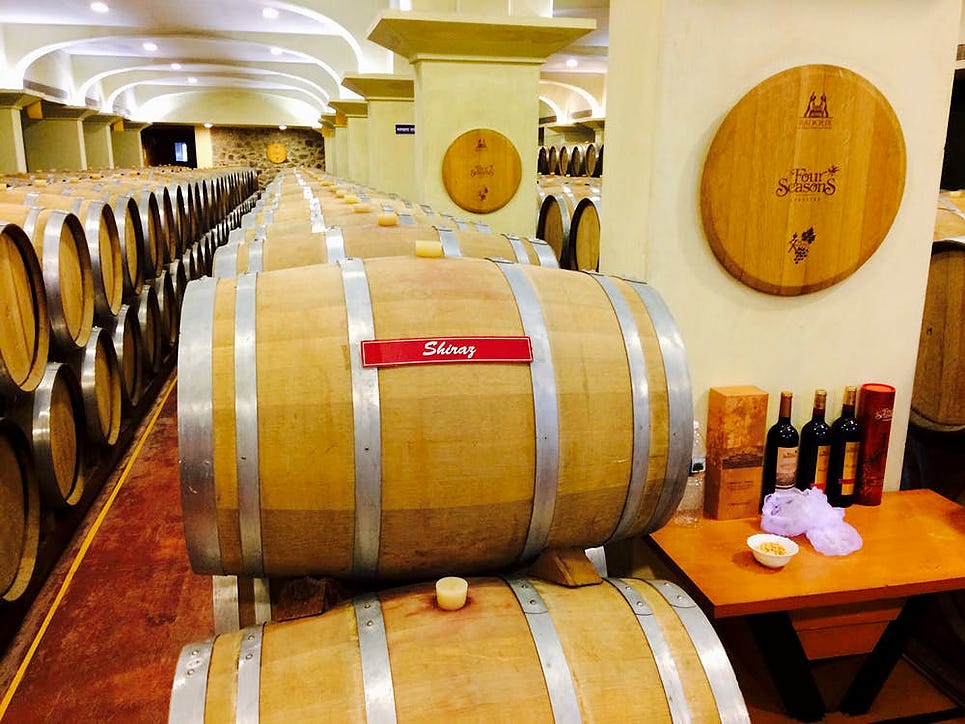This is the weekly newspaper column.
Fermentation vessels 9-21-2022
Winemakers have a choice of fermentation vessels—wood, stainless steel, and concrete. What is the difference between them?
While there are various variables, here is a general overview:
• Wooden wine barrels have been used for at least 2,500 years. The barrel we know today likely was developed by the Celts around 350 BCE. The Romans copied and improved the design and put them in common use by the 3rd century.
Wood barrels typically are made of oak, but can be made from other wood. French oak has a tighter grain and impacts wine less than American oak, which imparts more oak flavors. Barrels allow a small amount of oxygen to interact with the wine, a process called micro-oxygenation, and can add additional tannins. New or nearly-new barrels deliver flavors and aromas such as toast, spice, vanilla, cedar, and chocolate, dependent upon the “toasting” of the barrel with fire during manufacture.
Oak effects become more muted after each use. Many winemakers use a mix of barrels to reduce the impact of new oak, and just to save money. Barrels can cost as much as $1,000 depending on size and wood source.
• Stainless steel tanks can be impermeable to oxygen and can be temperature controlled. They are easy to clean and use for years. Winemakers who want to emphasize pure fruit flavors and crispness often use stainless steel for white and rosé wines.
• Concrete fermenters—called “eggs” because of their shape—fall between wood and stainless steel in affecting wine. They are neutral vessels, so they do not add flavors, but many winemakers believe they soften a wine’s texture. Concrete allows a small amount of air to slowly mix in the wine, but less than oak. The egg shape promotes a gentle, natural circulation of the wine, mixing with the lees to add complexity. Thick concrete walls also reduce temperature fluctuations during fermentation.
Since different vessels influence wine differently, some winemakers use up to all three to further refine their wine. The grape variety also influences the winemaker’s choice of fermentation vessel.
Tasting notes:
• Cantine Ermes Vento di Mare Pinot Grigio, Terre Siciliane IGT 2020: Light, zesty with enough acidity to make it bright and fresh. $9-12 Link to my review
• Marichal Premium Sauvignon Blanc, Canelones, Uruguay 2021: Substantial SB from quality maker in South America’s third-largest wine-producing country. $13-14. Link to my review
• Chehalem Inox Unoaked Chardonnay, Willamette Valley 2021: Light, fresh. Good acidity, pure, tasty fruit. $20-25. Link to my review
Last round: What do clouds wear under their shorts? Thunder pants. Wine time.
Email: wine@cwadv.com
Newsletter: gusclemens.substack.com
Website: gusclemensonwine.com
Facebook: facebook.com/GusClemensOnWine/posts/
Twitter: @gusclemens
Links worth exploring
Diary of a Serial Hostess Ins and outs of entertaining; witty anecdotes of life in the stylish lane.
As We Eat Multi-platform storytelling explores how food connects, defines, inspires.
Balanced Diet Original recipes, curated links about food systems, recipe reviews.
















Share this post